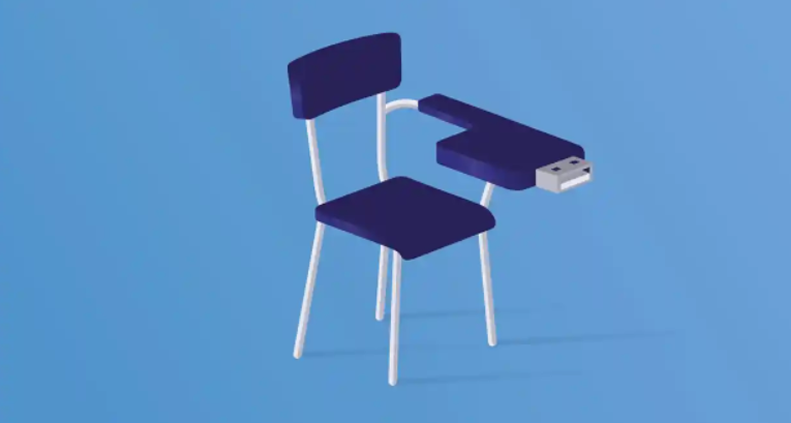Should we leave the classroom behind?
The pandemic has driven a great leap forward in digital learning. Is there any point in looking back?
(The Guardian) – Academics who think about education recognise that not all the enforced changes have been good. Covid highlighted how critical the social aspect of learning is, and that something extra happens when students and their teacher share a physical space. The experiment also played out differently in schools and universities, in part because the benefits of “co-present” learning may vary by age. The tension now is between those who see the pandemic as an opportunity to overhaul education and those who are impatient to return to “normal”.
“This is a time for schools and systems to reimagine education without schooling or classrooms,” says Professor Yong Zhao of the School of Education at the University of Kansas. Dr Jim Watterston of the Melbourne Graduate School of Education in Australia thinks the traditional classroom is alive and well, on the other hand, but that “education needs to be more adventurous and captivating” – and, above all, more flexible.
Earlier this year, Zhao and Watterston co-authored a paper in which they identified three major changes that should happen in education post-lockdown. The first concerns the content, which should emphasise such things as creativity, critical thinking and entrepreneurship, rather than collecting and storing information. “For humans to thrive in the age of smart machines, it is essential that they do not compete with machines,” they wrote. “Instead, they need to be more human.”
The second is that students should have more control over their learning, with the teacher’s role shifting from instructor to curator of learning resources, counsellor and motivator. This is where so-called “active learning” comes in, with a growing body of research suggesting that comprehension and memory are better when students learn in a hands-on way – through discussion and interactive technologies, for example. It’s also where the concept of “productive failure” applies. Professor Manu Kapur of the Swiss Federal Institute of Technology in Zürich argues that students learn better from their own or others’ failed attempts to solve a problem, before or even instead of being told how to solve it.
Zhao and Watterston’s third proposal is that the where of learning should change – “from the classroom to the world”. With lockdown all learning went online, but it tended to stick to pre-existing timetables, and it was this temporal rigidity that caused distress and disengagement in some students, they claim.
With digital tools it is no longer necessary for students to learn at the same time as each other. What’s needed, they say, is a mix of online and face-to-face learning – so-called blended learning or the flipped classroom, where students read or watch lectures in their own time, beyond the school walls, and solve problems in the presence of their teacher and peers.
That decoupling of learning time and school time means that the former can expand – something that is going to be particularly important for the recovery from Covid, says Laurillard. It comes as no surprise to her that students speed up their lectures, or that lecturers have begun dividing up their presentations into five- and 10-minute video segments, or that all this was happening even before the pandemic. “There’s a lot of redundancy in a 50-minute lecture,” she says.
But can you really acquire knowledge properly at speed? Woody Allen once joked about a speed reading course where he learned to read down the middle of the page and completed War and Peace in 20 minutes. “It’s about Russia,” was his summary. At the University of Waterloo in Canada, cognitive psychologist Professor Evan Risko has been testing people’s comprehension after speed-watching video lectures. Though it depends on the nature of the material, the student’s prior knowledge and the lecturer’s delivery style, his research indicates that an acceleration of up to 1.7 times has little negative impact and, of course, saves time.
These are, you might say, first world preoccupations. What of those who don’t have the luxury of digital tools? The digital divide is not a new problem, Laurillard says, but nor should it put a brake on change, “because the digital world moves faster in providing access than the physical one”. She points to the United Nations’ Sustainable Development Goal 4, which is to provide quality education for all by 2030. The only way this will happen, she says, is if teachers in disadvantaged areas receive tools and materials digitally – perhaps via massive open online courses – and then pass them on to their students in the traditional way.
If even the digital divide won’t hold back the coming revolution, it seems unlikely that the classroom will ever look the same again. As Laurillard puts it: “It took a global pandemic to drive home what we’ve been saying for 30 years.”
So much for the news … let’s experience it in practice …
“I felt so inspired by this course, which I learned so much from. It gave me a better perception of online teaching.”
Margo in South Africa
If you think ‘teaching online’ just means live lessons in a virtual classroom or Zoom, then get ready to think again!
Our comprehensive course on effective Online Course Delivery is now enrolling. Designed by industry experts with years of experience in online education, this course is tailored to help you develop and deliver effective, engaging online courses that inspire your learners and foster their success.
In this course, you will learn:
- The principles of effective online course delivery
- How to develop clear and measurable learning outcomes
- Strategies for engaging and motivating your learners
- How to design effective assessments and evaluations
- Tips for creating interactive and multimedia-rich content
- Techniques for promoting learner interaction and collaboration
- Best practices for managing online discussions and feedback
Our course is designed for educators and course creators of all levels, from beginners to experienced professionals. With a mix of online lectures, interactive activities, and real-world examples, you’ll gain the skills and confidence you need to create courses that truly make an impact.
Don’t miss out on this opportunity to take your online courses to the next level!
Enroll now and start delivering effective, engaging online courses that inspire your learners and drive their success!
Course length, dates & times
This 35-hour course is delivered over 5 weeks. There will be a weekly 1-hour live session, the timing of which will be negotiated per the availability of the group.
Apart from the live session, much of the interaction takes place in online forums. Participants can log in and work through each unit at any time during the week.
!! SPECIAL OFFERS !!
Book Online Course Delivery + Teaching Business English
and get £33 off the standard price
Register Now …
”I enjoyed Online Course Delivery immensely. The training provider has designed a detailed course that gives fantastic value for money, incorporating both individual and group forms of communication and tasks. The course has given me the knowledge and tools to further my career teaching online. I can highly recommend Online Course Delivery.”
Matt in Brazil
R




